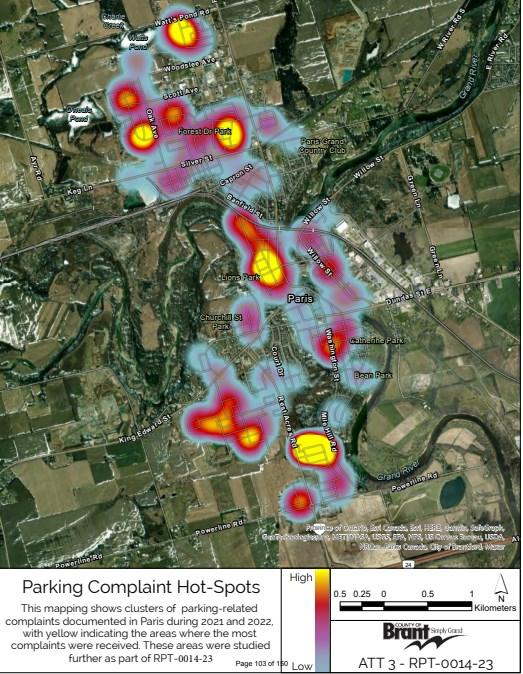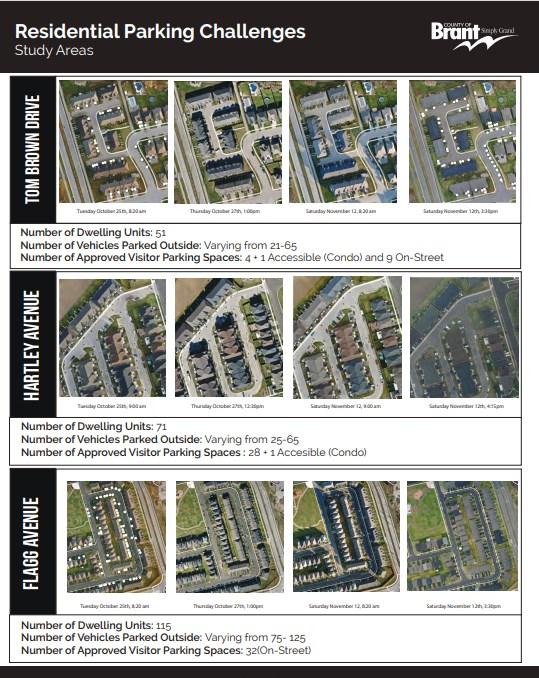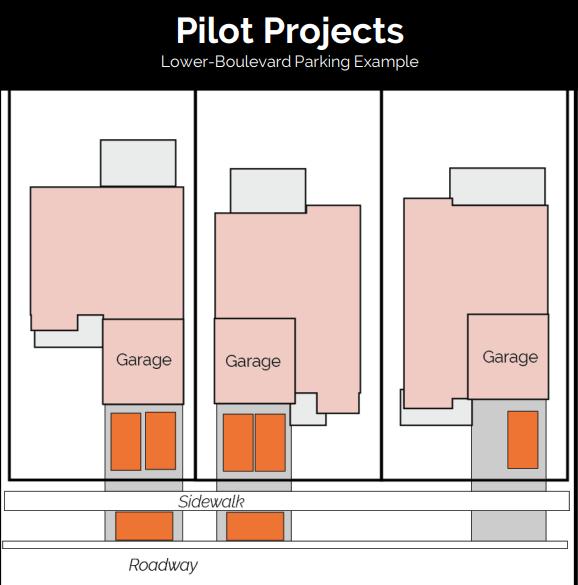
3 minute read
Solutions presented to growing parking concerns in Paris
By Casandra Turnbull
With the number of parking related complaints more than doubling since 2019, council recently approved new design guidelines to help tackle the growing problem.
Advertisement
The design guidelines were adopted by Council at their January 31, 2023 meeting as recommended by the Policy and Strategic Development Committee on January 17th , confirmed Melissa Connor, Director of Communications and Public Relations for the County of Brant.
The complaints relate to parking in residential areas throughout the County of Brant, many of them heavily centred around neighbourhoods in Paris. As the municipality continues to grow, councillors are examining new ways to manage this growth and development, while addressing the parking challenges, notably in the newer residential areas
But new subdivisions aren’t all to blame for this mounting issue. Many families are living in multi-generational homes, which translates to more vehicles per household. In 2006, 22% of the County’s households had 3 or more vehicles and in 2016 that number jumped to 30%, according to data presented by county staff. It also states, drone flights were flown at various times during the months of October and November (2022) to observe the reality of parking challenges and supports the number of cars per household has increased. By-law enforcement has seen an uptake in complaints and violations related to onstreet parking from 234 in 2019, to 480 in 2022, according to data presented at last month’s Policy Development and Strategic Direction Committee Meeting.
Depicted above are the parking complaint hot spots in Paris. The yellow coloured areas are where the most complaints are filed. The county is investing in ways to minimize parking complaints in future developments.
An analysis of the locations of these complaints shows they occur most in newer developments where there are clusters of single-width driveways that have less than 6.5m of length for driveway parking and less than 9.5m between driveways. Policy Planning staff have collaborated with Enforcement and Regulatory Services, Development Engineering, Development Planning, Corporate Communications and Marketing, Infrastructure Services, and the Roads Division to evaluate how overall parking plans are implemented in the County of Brant’s new residential developments.
Continued on page 7
Above is an example of lower boulevard parking, designed to stop on-street parking during winter months, December to March 31st . This type of enforcement is in place in the Township of Wilmot and City of London To the right are some of Paris’ newest subdivisions and the amount of available parking spaces for the number of units in the area.
They also looked at how the County can improve on setting expectations and meeting the needs of residents in these areas through a comprehensive look at the policies and standards related to private and on-street parking. These guidelines will be used in the evaluation of new and current developments to guide how and where on-street parking is provided when considering things like driveway placement, property frontage, and road design, Connor said in an email in response to questions asked by The Paris Independent.
Planning for parking in new developments should focus on promoting efficiently planned, compact, and accessible development for all modes of transportation, County staff recommend.


This will require a carefully thought-out network of road classifications that can accommodate the needs of all road users, including automobile and active transportation modes, as well as the needs of future users, including the potential for public transportation routes, it further states.
In the winter, when on-street parking can be a challenge for snow removal crews, the county is considering lower boulevard parking In effect from December 1 to March 31 each year, vehicles could be permitted to park on the paved portions of a boulevard (i.e. driveway ramp or apron), provided the vehicles can comply with certain conditions. It’s a similar tactic enforced by the Township of Wilmot and the City of London.
Connor confirmed a report on amendments to the Parking By-law, to consider lower boulevards, will be going forward in the spring.
County staff recognize it will take education and enforcement before residents will adhere to any new parking by-laws, therefore they are considering hiring additional staff to handle the increased complaints and enforcement.
The County will also work to educate homeowners on the location of on-street parking opportunities available in their neighbourhood, any restrictions that may be related to ongoing construction, winter maintenance, etc., contact information for applicable staff to field inquiries and provide educational materials on the topic for both new homeowners and developers (brochures, post-cards etc.).
A more comprehensive look at the County’s plan to curb on-street parking is available online There have been no recent changes to the County’s Parking By-Law regarding on-street parking in Paris, said Connor.
In 2022, staff completed a two-year parking program in Paris to remove alternate parking and allow parking on one side of the street to improve efficiencies to the winter maintenance operations and to also optimize parking This has been a similar approach to on-street parking in new subdivisions as parking would typically be allowed on one side of the street and prohibited on the other side based upon, but not limited to, criteria such as pedestrian safety, number of on-street parking spaces available, available sidewalks, notable utilities such as hydro poles, street lighting, mailboxes, fire hydrants, etc, said Connor










